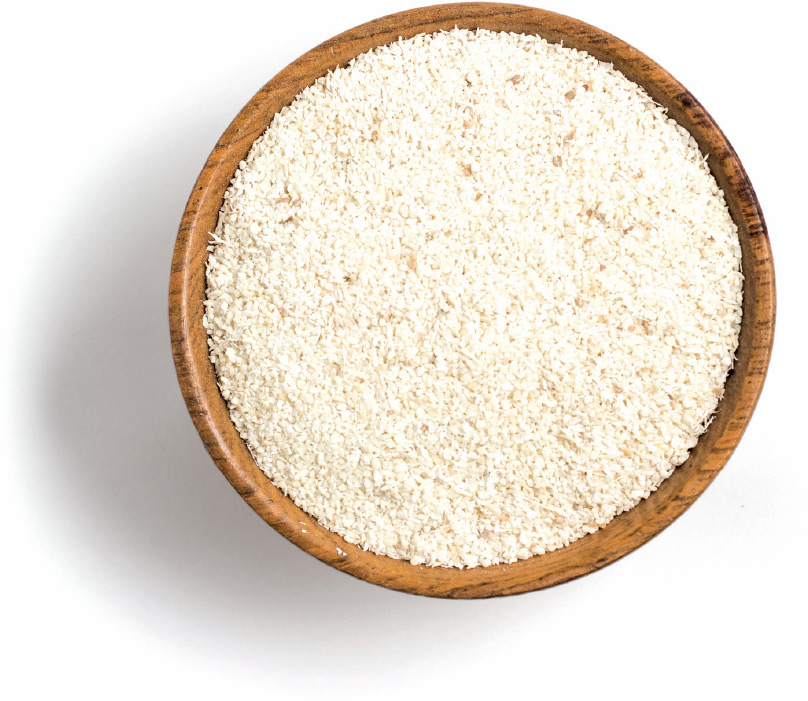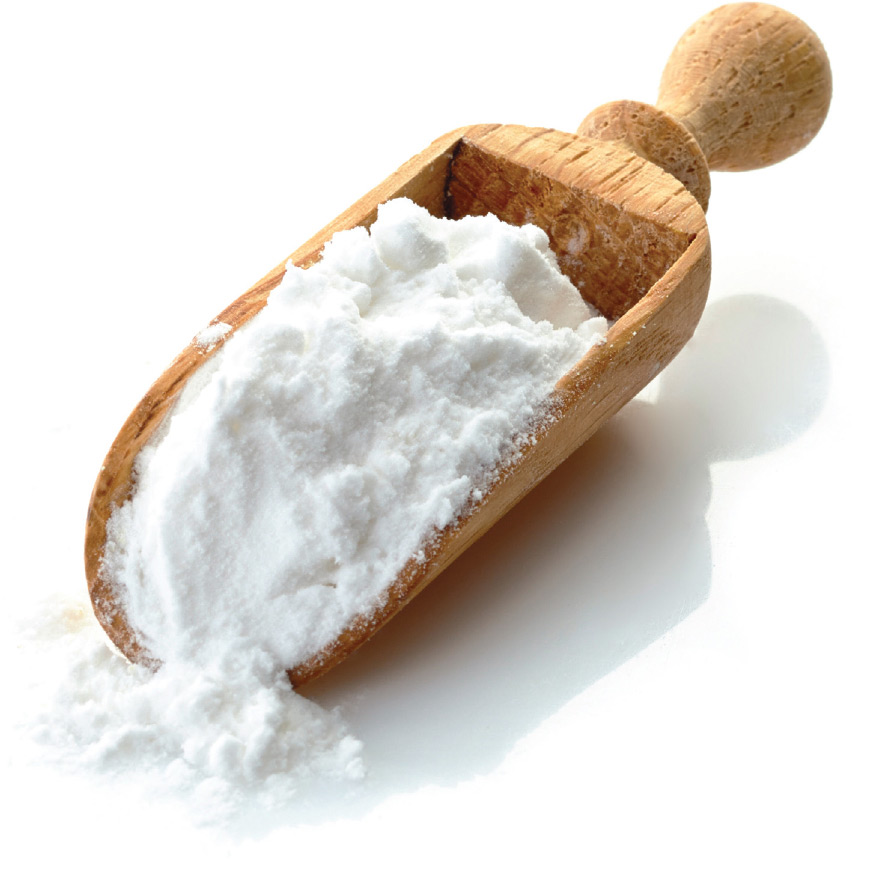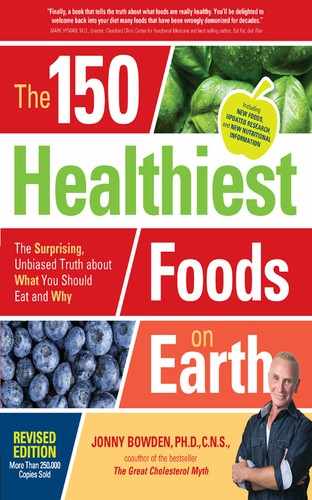Flour. Can’t live with it, can’t live without it.
Yes, I know that’s a paraphrase of an old (and stupid) joke, but in the case of flour, it’s true—at least for the majority of people reading this book who are not 100 percent strict Paleo or keto. (And, truth be told, I’ve had more than a few Paleo-fanatic friends who’ve been known to sneak a brownie or a chocolate chip cookie now and again. Just sayin’.)
So flour is necessary for just about every baked good on the planet (with the occasional exception like “flour-free brownies”). And here’s the problem for nutritionists like me. The very process of making flour renders it pretty useless as a delivery system for nutrients. Flour is basically grain—frequently contaminated with the sprays used to grow it—which is then “purified,” and ground into thin, dust-like particles. It is almost the exact opposite of a whole food because it has to be processed a lot to even be usable.
On the other hand, who wants to live in a world without baked goods?
So, for me, flour is a compromise, and in a perfect world—or one where we didn’t have taste buds—I’d probably recommend dumping it altogether.
Recently, though, two very interesting types of flour have become available. These were not around when the first edition of the book came out, but they are now, and they’re gaining in popularity for good reason.
Cassava Flour

In preparation for the revised edition of this book, I called my dear friend, chef Jeannette Bessinger, a.k.a. the Clean Food Coach. I asked her what foods she’d recommend including in the new edition. One of the first ones she mentioned was cassava flour.
Okay, I admit, I had never heard of cassava flour, but I made a note to look into it. Then, a couple of weeks later, I was speaking at the Paleo f(x) conference in Dallas, and I found myself wandering around the exhibit hall, where dozens of interesting Paleo-friendly food companies were showing their wares. One booth was attracting a lot of people, and when I made my way to the front of the line, it immediately became apparent why everyone was mobbing the booth.
Chocolate chip cookies. But not just any chocolate chip cookies. These were like almost the best chocolate chip cookies I had ever tasted.
But what on earth were chocolate chip cookies doing at a Paleo conference in the first place?
Simple. They were made with cassava flour.
Cassava flour is a resistant starch, which is a special kind of fiber. We generally think of fiber as being either insoluble or soluble, but resistant starch offers the best of both worlds. It’s technically an insoluble fiber, but when it reaches the colon, it acts more like a soluble fiber, serving as powerful food for the good bacteria in your gut. The gut bacteria feast on resistant starch, making resistant starch one of the best prebiotic fibers on the planet. (Prebiotics are essential food for probiotics, the live microorganisms that live in your gut.)
Resistant starch like cassava flour and potato starch (see here) helps to regulate blood sugar levels and improves insulin sensitivity. And there’s good reason to think it may also act as a weight loss tool. Why? Because research has confirmed that the diversity and health of your gut bacteria plays a major role in achieving and maintaining a healthy weight.
Cassava flour can be used in place of wheat flour and many people won’t even notice the substitution. (Certainly the people lined up for those amazing chocolate chip cookies weren’t missing the wheat!)
Cassava flour has a lot of carbs (like most other grain-based flours), but if you’re making something that requires flour, cassava flour seems to be a much better choice than wheat flour.
Why use cassava flour instead of other gluten-free flours? “It has a fine texture, neutral taste, white color, and low fat content compared to almond flour or coconut flour,” says my friend Josh Axe. “It’s also sustainable for people with allergies who can’t consume nuts or coconut.” It’s also grain-free and nut-free.
A 1/4-cup (30 g) serving of cassava flour has 114 calories, 2 g of fiber, and about 28 g of carbs.
Cricket Flour
Cricket flour is made from, well, crickets. But it’s not as weird as it might sound. A 2013 report from the Food and Agricultural Organization of the United Nations points out that insects are actually nutritional powerhouses, high in protein, fat, and the essential amino acids lysine and tryptophan. Insects can be farmed with a lot less environmental impact than traditional livestock. And their potential as a food source is very promising.
The story of how cricket flour is pretty interesting. A couple of guys named Gabi Lewis and Greg Sewitz got into the edible insect market while one of them (Lewis) was thinking about taking his homemade protein bars out into the marketplace. Looking for a hook to compete with all the other protein bars, they decided to add crickets, an idea Sewitz got from attending a conference on climate change.
So the two order a few thousand live crickets, get them sent to their house at Brown University, roast them in the oven, and throw them in a food processor.
They played around with it a bit, and the result—now known as cricket flour—got incorporated into the bars to substitute for protein powder from soy.
Cricket flour contains more protein than any other insect source, about 7 g in just two tablespoons (12 g). It’s also a great choice for those wanting to avoid gluten. And it’s sustainable. Crickets release 80 percent less methane than cattle, and they require much less feed than any other farm animal.
Bitty Foods founder Megan Miller, who has given a TEDx lecture on eating bugs, told National Public Radio (NPR) that her company’s blend of powdered crickets and gluten-free starches for baking has quite a following among moms. “There’s a need among moms who want to get more protein in their kids’ diets, but it can be hard to feed them things like a steak,” she said, in an article posted on the NPR website.
In 2012, former president Bill Clinton issued a challenge for those competing for the Hult Prize, the largest student competition in the world for social good. Five MBA students from McGill University in Montreal answered that challenge and came up with the idea that won the Hult Prize for 2013: Farm insects as a sustainable source of protein.
They founded a company—ASPIRE—and bought their first cricket farm in Austin, Texas, and now produce delicious Aketta Crickets and cricket flour in a variety of flavors. Find them at www.aketta.com.
One serving of cricket powder (about 12 g, or 2 tablespoons) contains about 55 calories, 7 g of protein, 2 g of fat, and less than 1 g of carbs.
Potato Starch

How in the world does potato starch even rate a listing in a book about great foods? Simple. Because it’s actually a very fine source of resistant starch (see fiber sidebar shown here). Resistant starch is a form of fiber that is feasted upon by the good bacteria in your colon. That’s why it’s considered a prebiotic fiber—it’s food for the probiotics that live in your gut and that you want to thrive and survive.
Resistant starch improves insulin sensitivity in people with metabolic syndrome. One review paper on the metabolic effects and potential health benefits of resistant starch noted that resistant starch intake seemed to decrease blood sugar and insulin response, lower triglycerides, improve whole body insulin sensitivity, increase satiety, and reduce fat storage. The same paper noted that resistant starch is “an attractive dietary target for the prevention of diseases associated with dyslipidemia and insulin resistance as well as the development of weight loss diets and dietary therapies for the treatment of type 2 diabetes and coronary heart disease.”
Like other prebiotic fibers, potato starch is fermented in the large intestine, producing an important short-chain fatty acid called butyric acid, the preferred fuel for colon cells and an important compound for digestive and gut health. Resistant starch in potatoes is formed when you cook the potatoes and then cool them. The cooling transforms some of the digestible starches in potatoes into resistant starches (through a process called retrogradation).
Understandably, many people are loathe to eat a lot of potatoes, because they’re high in carbs and are considered high glycemic. (A medium baked potato has a glycemic load of 28—up to 10 is considered low, 10 to 20 is considered medium, and anything over twenty is high.) That’s why potato starch is available as a supplement—you get nothing but the resistant starch and none of the high-glycemic carbs. If you’re using potato starch as a form of resistant starch, I’d recommend Bob’s Red Mill Potato Starch, which is available on Thrive Market for under five bucks, and on Amazon as well. Put a tablespoon or so (12 g) in your smoothie for an extra fiber boost.
